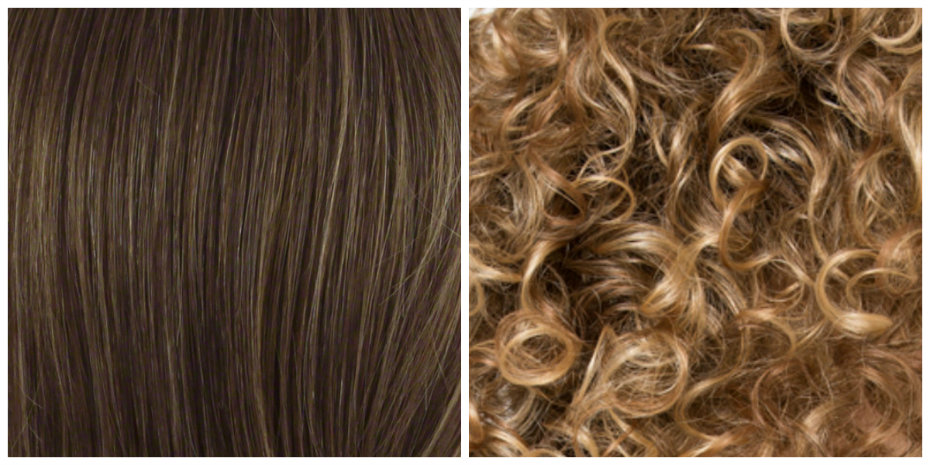When I was about twelve years old, I was dismayed to find my, previously inoffensive, straight hair had transformed into curly hair.
Now, curly hair is clearly not a bad thing, but in my case, the curl began at the root while the length was still flat. I have allowed no photos to exist that could document this time in my life, so you'll have to use your imagination. I can assure you, it was no one’s idea of a good hair style. My only reprieve was that it was the early 90’s and big hair was in fashion, so I tried my best to make it look intentional.
Since then, I’ve learned to embrace my naturally fluffy bouffant and I’ve heard from many now-grown-ups that I am not alone in my hair-raising experience. Many people recall having perfectly straight hair throughout their childhood, until their teens when it all got unruly.
Some people claim that they got a perm that really was permanent, while others found that after chemotherapy, they had a different head of hair. I have also heard that pregnant and menopausal women can experience drastic changes to hair texture and volume. The phenomenon has made me curious—what exactly is happening when hair changes texture? Is the shape of the hair follicle changing? Are hormones somehow responsible? Could a perm last forever?
Who Does Your Hair:
Your parents do...sort of. Genes play a definite role in determining the shape of a hair follicle, but many things can affect how hair will grow. A hair strand is made up of a protein called keratin which is made up of amino acids. Depending on how the amino acids bond, the bonds increase the chance that the hair will bend. If a hair follicle is thick and round, particular amino acids, called cysteines, are less likely to gather close enough to form tight bonds, so the strand is more likely to be straight.

If the follicle is flat and thinner, the cysteines are better able to bond together and pull your strands into ringlets. Think of wrapping a present with round string versus a flat ribbon. The flat ribbon is better suited to being shaped into a curl, while the round string likely won’t be as malleable.
The Hair-Do Hormones:
At times of great hormonal shifts, like puberty, pregnancy and menopause, many strange things can happen to the human body. Skin texture can change, the ability to put on or lose weight might not be the same and, sometimes, hormonal changes can literally curl (or straighten) your hair!
Thyroxine and Triiodothyronine are hormones produced by your thyroid gland. Clinically, doctors have observed that certain hair texture and volume changes are commonly associated with thyroid abnormalities like hypothyroidism and hyperthyroidism. People with hypothyroidism might notice that the lack of sufficient hormones will lead to dry, brittle hair; while people with hyperthyroidism might notice that their hair is thinner, brittle and oily.
Androgens are male sex hormones. They are responsible for the development and maintenance of male characteristics, but androgens increase in both boys and girls during puberty. In both sexes, these hormones contribute to increased body hair and, later, balding in males. An increase in androgens in females can actually change the shape of the hair follicle from round to flat and this can instigate a change in texture from straight to curly.
Insulin is a hormone known as the body’s sugar regulator, but scientists did a study on senior women with insulin resistance and found that there are strong correlations between insulin resistance and androgenic alopecia, or severe hair loss.
The Permanent Perm:
Have you ever met an adult with curly hair who claims that their ringlets are the result of a perm they had as a child? It could be that they got their first perm when they were about to experience a hormonal change. But, it is possible for a perm to permanently change the structure of the hair follicle.
Perms use heat and chemicals to break down and re-configure the protein bonds in the follicle and the strand. The most common chemicals in perms are ammonium thioglycolate, for breaking down the “sulphur” or “disulphide” bonds in the hair protein, and hydrogen peroxide which oxidizes them back together in a new curly configuration.
These chemicals can cause permanent damage to the hair follicle, which could result in hair that is forever changed.
So, Will Your Hair Change Shape?
Hormones, drugs and vitamins, and chemical treatments can change the shape of the follicle, which means that your hair could change many times over the course of your life. If you have always had thick straight hair, with wide strands, you are somewhat less likely to find yourself with a head full of ringlets, as long as you don’t give your self a strong perm, find yourself on certain psoriasis medications or end up undergoing chemotherapy treatment.
If your hair is lighter on your head, wavy and more easily damaged, you might find yourself with a lot more hats than other people while you cope with hair that can't decide how to lie. And what's more, people whose hair is malleable enough to have changed texture once, can easily change again with the shifts in hormones that come from regular life changes and age.
Things to look forward to?